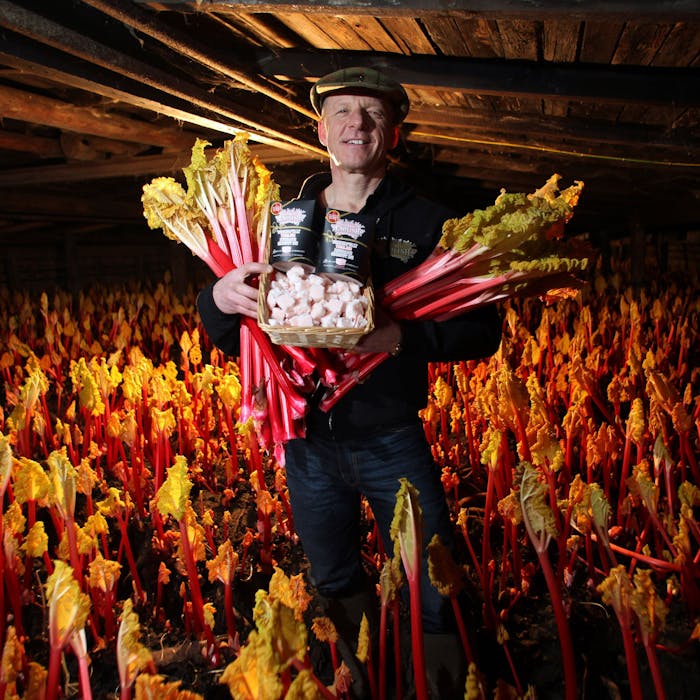
Yorkshire's Rhubarb Triangle - forcing the pace on a Spring treat
The Rhubarb Triangle is a 9-square-mile area of West Yorkshire, famous for producing early forced rhubarb in the dark. It grows nearly all of the rhubarb consumed in Britain, and, at one point, produced enough of the vegetable to satisfy almost the entire world's demand.
To this day, Yorkshire's Westwood family produce over 50% of the area's rhubarb, making them the largest producer of it on the globe.
Rhubarb is thought to have first grown in the mountains of Mongolia. It thrives in hardy condtitions, and has toxic leaves, meaning that it took centuries for people to realise the stalks were edible. When, in the 17th century, Britons began to realise rhubarb went well with sugar, it began to be imported in mass quantities. A century later, it started to be cultivated here for culinary purposes, because it grows well in poor weather, and it thrives in nitrogen-rich soil - also abundant in Britain.
Yorkshire farmers became famous during the 19th century for their forced rhubarb - protecting it from the winter weather and growing it in darkness. Eventually, the county became synonymous with rhubarb and the term 'Rhubarb Triangle' was coined in the early 20th century, when it was noticed that the highest density of rhubarb farmers formed a crude geographical triangle between the cities of Bradford, Leeds and Wakefield.
The Whitwell family of Leeds are generally regarded as being the first large-scale grower who impacted on those producing further south. But Jonathan Westwood (pictured) is the main surviving rhubarb producer. His great-great-great grandfather was amongst the first forced rhubarb growers in the mid-1800s. Today, the Westwood's farm is approximately 500 acres in total, with about 150 acres dedicated to forced rhubarb. They also produce outdoor varieties of rhubarb, and a wide range of brassicas.
Every February, Wakefield Council holds a Rhubarb Festival, celebrating the area's links and promoting the surviving rhubarb industry.
An old technique for forced rhubarb growing is still used. Rhubarb takes about two years to grow outside, before being moved into dark forcing sheds. Once inside, it is left to its own devices. Growing in the dark stops it producing chlorophyll, which makes the plant tall and straight, and the leaves small and yellow. To avoid spoiling the process by turning on the lights, harvesting is done by flickering candlelight.
Further reading
Links to external websites are not maintained by Bite Sized Britain. They are provided to give users access to additional information. Bite Sized Britain is not responsible for the content of these external websites.
